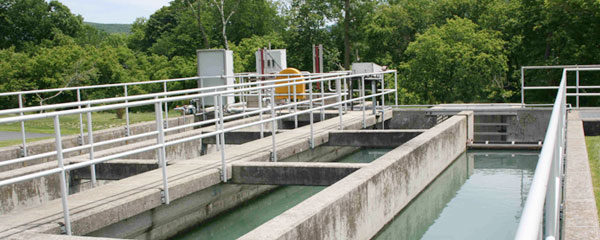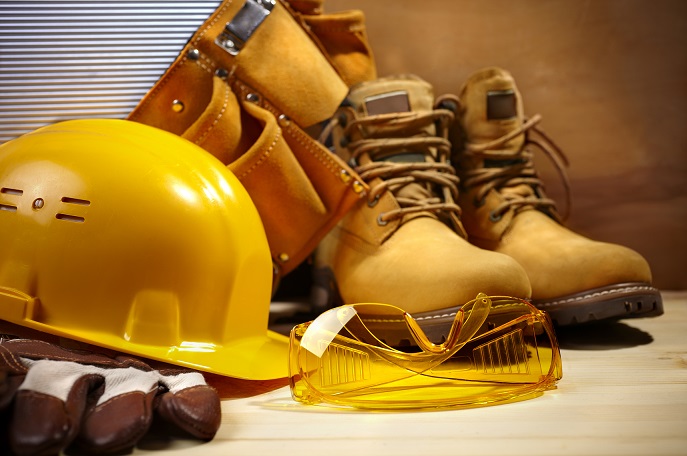Safety at ETP Operation & Maintenance
Operating and maintaining effluent treatment plant ETP or Sewage treatment plant STP is a challenging job because of various health risks. Plant manager and operators should be physically fit and mentally alert. They also should accept assigned work gladly and complete them independently.

While following these responsibilities one should never forget about safety of others or themselves as they are continuously exposed to high noise level and unpleasant odors. In this type of work, physical presence matters, often in unclean environment. As ETP or STP plant needs to be run 24X7 therefore they need to work for 8 hrs in rotating shifts often without weekends or holidays. Sometimes they required to work overtime.
Since ETP operators are exposed to very dangerous or hazardous chemicals on daily basis, these chemicals may cause acute poisoning, chemical accidents (burning, eye injury etc.), damage ro respiratory system, allergy, chronic diseases or dermatitis etc.
Read More about Operation and maintenance of ETP
It is important to identify hazards and take necessary actions or measures to mitigate ETP operation risks.
What are Hazards in Operation & Maintenance of ETP or STP?
- Slips or falls into pits, ponds, tanks or clarifiers causing injury or drowning
- Falls or slips on slippery floor because of solvents or solutions
- Hazard due to suffocation or deficiency of oxygen or poisoning
- Burns because of hot water or solvent or concentrated acidsor bases
- Electric shock caused by faulty electrical equipment
- Cuts and pricks due to sharp edges
- Fire and explosions due to flammable gases release during process
- Vigorous chemical reactions caused by uncontrolled mixing of chemicals
- Intoxication or bacterial infection caused by drinking untreated wastewater
- Smoking, welding in presence of chlorinated solvent vapors

How to Ensure safety at ETP Operation & Maintenance?
- Use safety shoes with non-slippery soles
- Wear protective and chemically resistant clothing to avoid exposure skin to liquids, vapors or gases
- Do not mix chemicals without supervision of chemist or safety professional
- Check electrical equipment for safety before use or at least check if all cables are properly insulated
- Wear goggles all time to avoid exposure of eyes to vapors, dust or chemical splashes
- Obey all safety instructions while handling or transporting chemicals like liquid or gaseous chlorine, concentrated acids or alkalis or toxic gases etc.
- Wear respirator or gas masks when exposed to harmful gases of vapors
- Do not drink of eat in areas where biological or chemical contamination is expected
- Use non-latex gloves if sensitivity to latex is observed
- All workers should undergo routine health checking to reveal early symptoms of chronic effects or allergies
- Learn to use safe lifting and moving techniques for heavy chemical containers. Also mechanical assistance pursued
First aid in case of chemical exposure:
- Inhalation: Remove person from source of contamination. Remove person into fresh air. Perform CPR if victim is not breathing. Get medical attention, keep person warm and quite. Do not leave unattended.
- Ingestion: Remove person from source of contamination. Do not induce vomiting. Give 2 cups of water after every 2 mins. Get medical attention, keep person warm and quite. Do not leave unattended
- Skin Contact: Remove person from source of contamination and take immediately to source of water. Remove cloths, socks, jewelry from unaffected areas. Get medical attention.
- Eye Contact: immediately flush eyes with lukewarm water for a least 15 minutes. Assist victims by holding eyelids away from the eyeballs and instruct them to rotate their eyeballs.
Just to summarize the whole article always wear proper gloves when working with acids, safety boots, safety masks, goggles, apron, safety belts, helmets. Also make sure work area has first aid kits, fire extinguishers and respiratory protective masks with man pack cylinders.
Make sure to report any flaws or troubles you observed in ETP or STP plant so that accidents can be avoided which can increase safety at workplace.
Facility managers and business owners get their workers onboard with workplace safety efforts. They can share injuries statistics with employees to make them aware risk at workplace. Also they can offer incentives for representing great workplace safety behavior. These simple initiatives can make lot of differences.
Take care!
If you have other ways to increase safety at ETP operation & maintenance then please leave a comment.
Below are top rules to be followed every time for the safety of you and people around you:
1) Always stay alert
2) Wear Proper Uniform as per the working environment for safety
3) Use the right equipments / tools for the right job to maintain safety and efficiency
4) Keep Working area clean
5) Keep First-Aid nearby and handy
6) Report it to departmental head if you see any unsafe conditions
7) Last but no the least Always follow the rules

Very informative post and useful as ETP/STP requires lots of precaution during the operations as rightly mentioned.
ETP, STP,
Water treatment plant operation &main